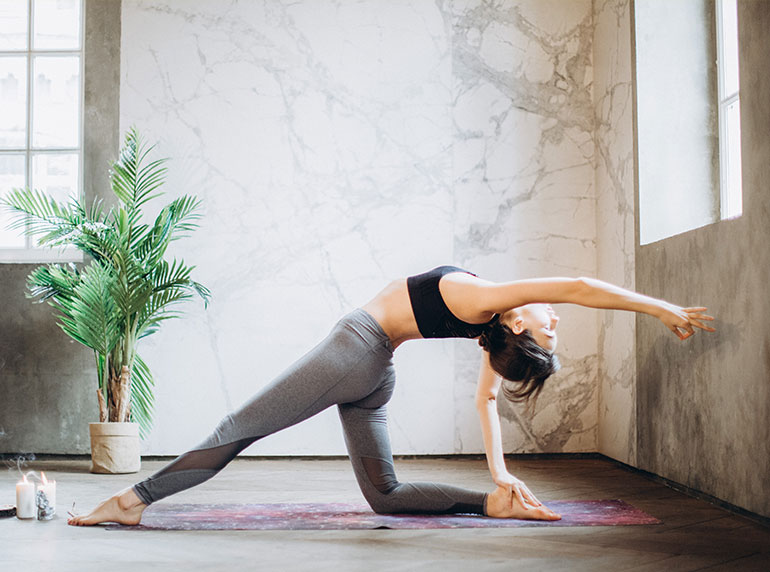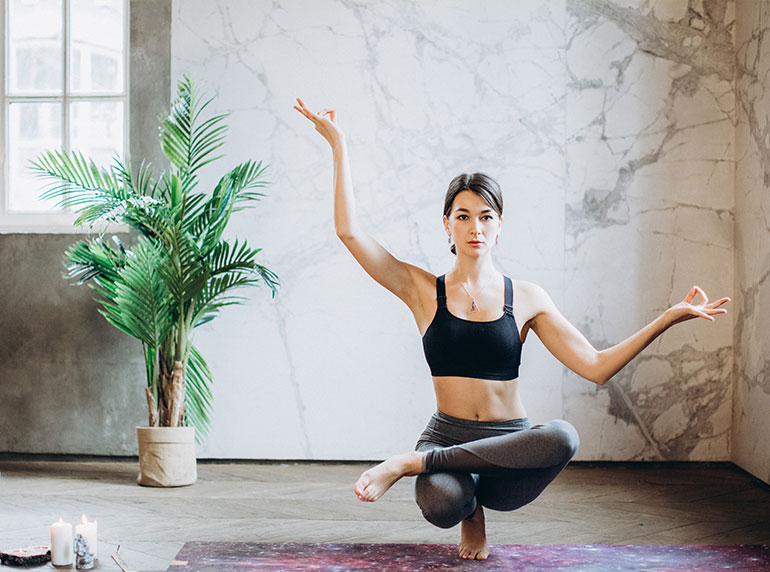When people think about yoga, strength isn’t always the first thing that comes to mind. But this doesn’t mean it can’t or shouldn’t be a part of your practice!
Traditional asana practices often feature long holds (which build endurance) and passive stretching (which increases passive flexibility). However, as yoga evolves we’re seeing a shift towards building power and increasing active flexibility through dynamic movement. Perhaps the most distinct shift is the strength that yogis are now cultivating. This is partly spearheaded by yogi’s bringing in lessons and knowledge from other athletic disciplines such as dance, martial arts, and calisthenics.
However, gaining strength in yoga requires us to actually incorporate principles from exercise science into our approach to structuring our yoga practice. So let’s discuss how learnings from gymnastics and strength training can help us create yoga flows that build strength (and allow us to master fun new skills).
We all wish for world peace, but world peace will never be achieved unless we first establish peace within our own minds.”
Geshe Kelsang Gyatso
First, let’s get this out of the way–-building strength will not make you overly muscular or necessarily decrease your flexibility (unless you’re exclusively tossing barbells overhead in the weight room). So get that powerlifter image out of your head, and think more about the lean and muscular physique of a gymnast or circus performer.
So how do we do it? And how will this be different than how yoga is usually practiced? Here are a few ideas?
Begin with a warm-up that doesn’t kill you.
The idea behind this approach is that part of your strength-based yoga practice is going to be putting a heavier-than-usual stress on the body, which means it’s essential to warm up thoroughly without wasting energy or exhausting yourself. Just warm up until your heart rate is elevated and you’re sweating lightly. This could mean a few Sun Salutations, or short flow like one of these.
Do some skill-based work first.
Trying to nail Eka Pada Bakasana (one-legged crow) or a freestanding handstand? Do it after your warm-up. This is going to be the time when you have the most energy and focus to work on skill-based movements. In yoga, we often put these challenging positions as peak poses at the end of a practice. While not necessarily harmful, this doesn’t allow us to approach them with our full ability since we’re often already exhausted.
Please note that there are two exceptions to this approach. Firstly, if you’re working on drills to support difficult postures (i.e. handstand holds against the wall, etc.), do that after your skill work. Secondly, if you’re working on positions that mainly require flexibility (as opposed to strength or balance), place these later in practice once you’ve spent more time opening up.
Add some strength-based work early on.
After warming up and working skills, now is the time for your strength work. One of the best ways to do this is with a short but challenging (think very challenging) flow that you can repeat 1-3 times. After each repetition of the flow, take a long rest in Childs pose. Make the difficulty of this mini-flow match your (or your students) level, while throwing in one or two “reach” movements or postures. You/they will eventually adapt to the challenge. For an example of a challenging strength-focused flow for intermediate-advanced practitioners, check out a “Super Human” Strength sequence here.



As I get older I feel myself becoming less flexible. These Yoga sessions are helping me to regain my flexibility.
Excellent teaching. An atmosphere of peace and serenity. Wonderful workout for the body. An exercise approach that can be done at any age.
Since the start of Yoga classes I find that I can pull myself back into focus better then before. This is my weekly sanctuary from life’s stresses. I look forward to this class more then I can say.
Stretching has helped me enormously with my back problems. It’s been great for balance stretching, breathing and concentration. When I am here I’m in total concentration of my mind and being.